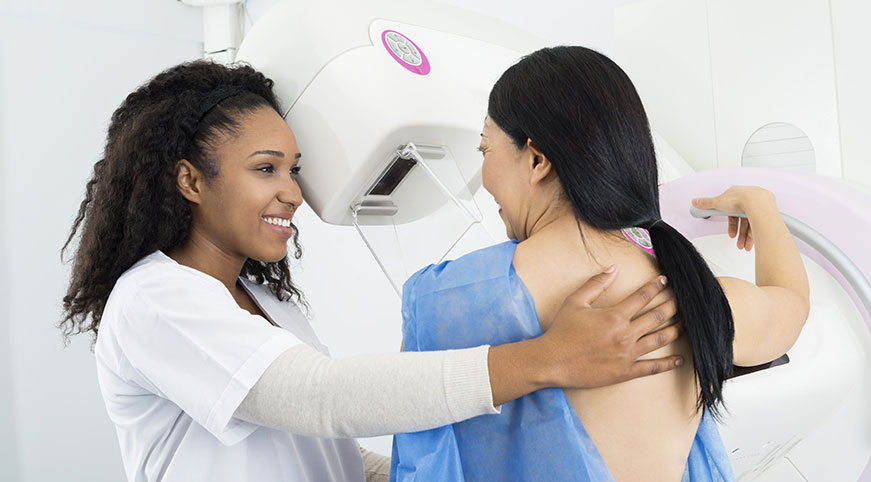Breast care is an important part of health and wellness for women. At CHA HPMC, we are dedicated to providing exceptional women’s health services, with high-quality breast exams and imaging procedures. Dr. John Lin, Chairman of Diagnostic Imaging at CHA HPMC, highlights the importance of breast care and breast care services offered at CHA HPMC.
1. Why is breast care important?
Breast care is important to detect any abnormalities or concerns such as breast lumps, breast pain, or nipple discharge. Women must understand what’s normal and when it’s important to consult a doctor. It’s also important to understand common screening and diagnostic tests for breast health, such as clinical breast exams, mammograms and breast ultrasounds. According to the American Cancer Society, breast cancer is the most common cancer in American women, except for skin cancers. The average risk of a woman in the United States developing breast cancer sometime in her life is about 13%.
2. Is there a particular age when women must start paying attention to breast care?
The American College of Radiology (ACR) recommends that women should start undergoing routine, annual mammograms at the age of 40. Those with higher risk may need to start prior to 40 years of age and may require additional screening. Screening should continue as long as a woman is in good health. Women must also have annual clinical exam by the physician, apart from breast self-exams at least once a month. You can consult your doctor to learn how to perform breast self-exams.
3. What are some of the risk factors of breast cancer?
Genetics is one of the most prominent risk factors for breast cancer. Women who have inherited changes to certain genes such as BRCA1 and BRCA2 are at a higher risk. The second major risk factor is family history. Women who have had multiple family members with this condition are at a higher risk. Apart from family history, most breast cancers are sporadic.
4. What are some of the symptoms of breast cancer?
Some of the key symptoms of breast cancer include:
- New lump in the breast
- Thickening or swelling of part of the breast
- Redness or flaky skin in the nipple area or the breast
- Pulling in of the nipple or pain in the nipple area
- Nipple discharge other than breast milk, including blood
- Any change in the size or the shape of the breast
- Pain in any area of the breast
5. How can you detect breast cancer early and what are the benefits of early detection?
Regular screening exams like Mammograms can help in early detection of breast cancer to improve outcomes and lower mortality rates.
6. What is a mammogram?
A mammogram is low-dose, two-view X-ray of the breast. During a mammogram, the breast is compressed between two plastic plates to take an X-ray. The mammogram can show early signs of breast cancer or any other abnormalities. There are two types of mammograms:
- Screening mammogram: It is an annual exam for women age 40 or above, who have no problems or symptoms, to check for any abnormalities.
- Diagnostic mammogram: It is used to examine patients who have symptoms such as lump, pain, or nipple discharge.
At CHA HPMC, we offer screening and diagnostic mammograms in addition to breast ultrasound which helps detect issues that mammogram may not identify.
7. What is unique about the breast imaging services at CHA HPMC?
CHA HPMC offers stereotactic/mammogram-guided or ultrasound-guided needle core biopsy. After a mammogram, if the doctor or radiologist feels the need to conduct further investigation of the abnormality, they perform a needle core biopsy (stereotactic or ultrasound) to remove a sample of the breast tissue. This is minimally invasive as compared to a surgical biopsy, which removes a larger specimen and causes scarring. Needle core biopsy is a half-hour procedure and patients can leave the same day.
Go to our Blog
 ENGLISH
ENGLISH KOREAN
KOREAN Spanish
Spanish RUSSIAN
RUSSIAN Armenian
Armenian FILIPINO
FILIPINO Chinese (Simplified)
Chinese (Simplified) Chinese (Traditional)
Chinese (Traditional)

최신댓글